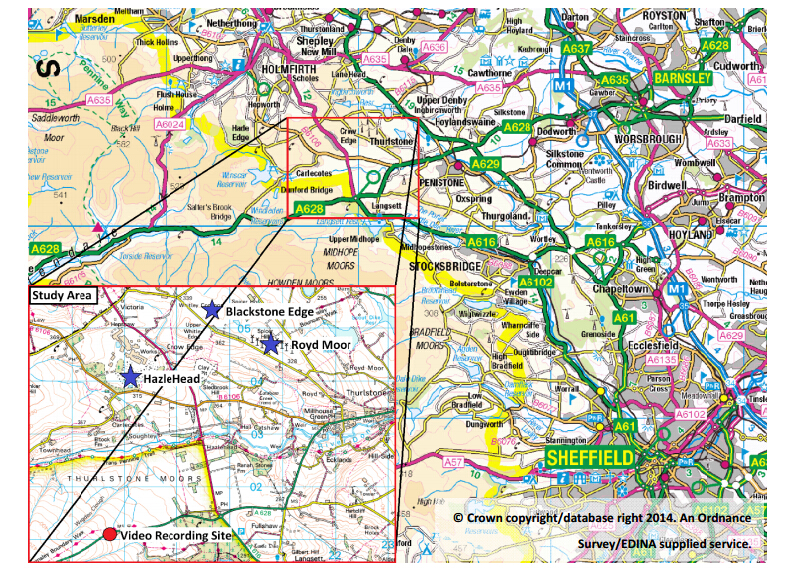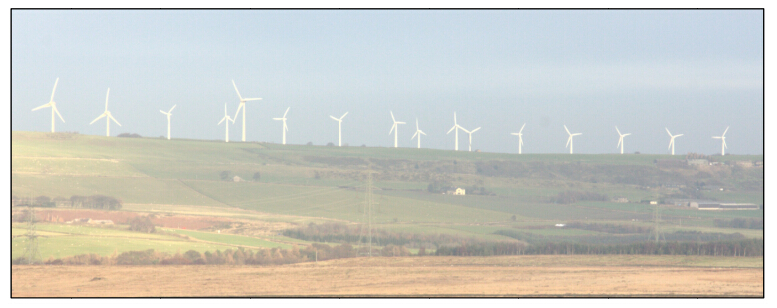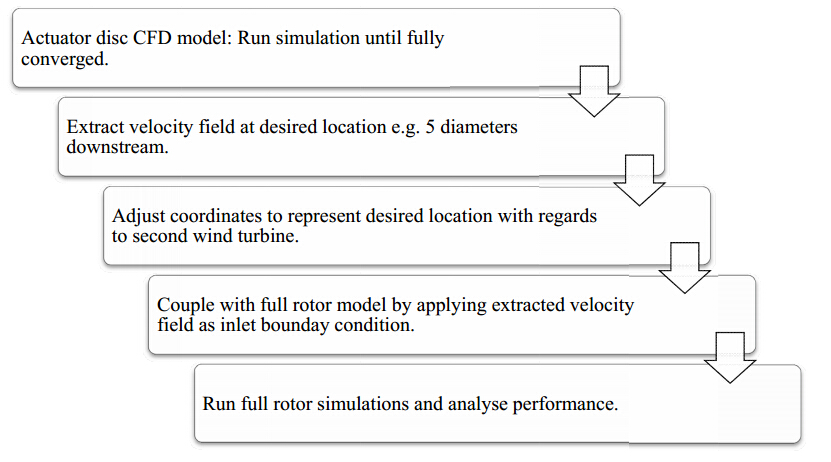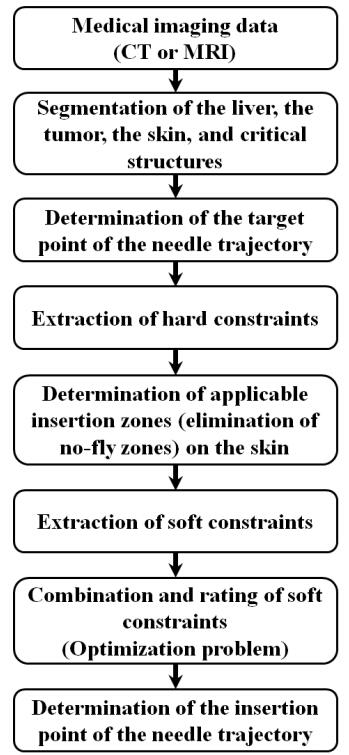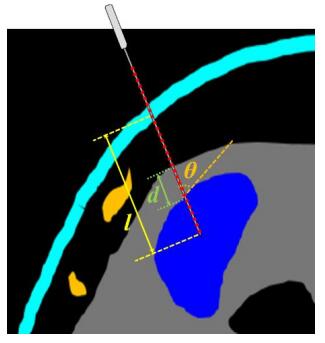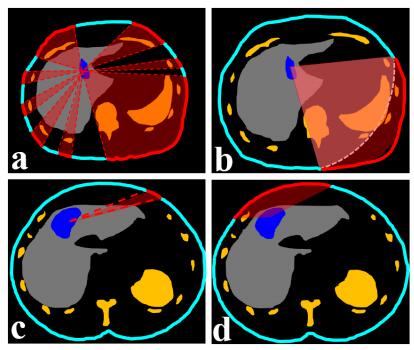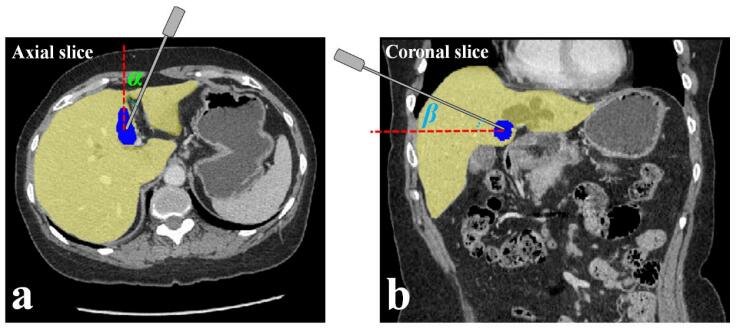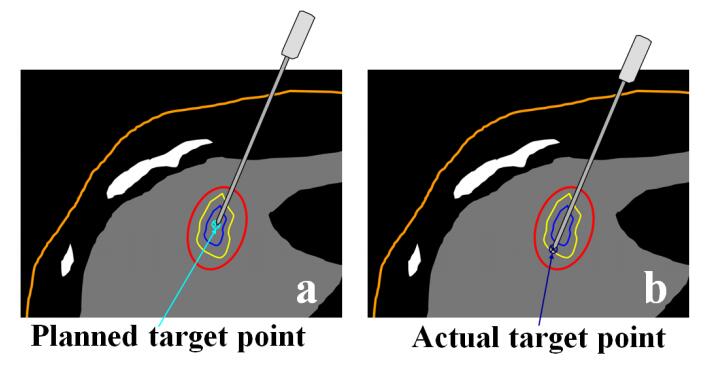1. Introduction
“Wind power has now established itself as a mainstream electricity generation source, and plays a central role in an increasing number of countries’ immediate and longer term energy plans” [1].
1. 1. State of the industry
Global demand for energy continues to grow and while the international market for wind energy shrank in 2013 for the first time in 20 years (see Figure 1), it is anticipated that this dip will only be temporary [2]. Indeed, cumulative wind turbine generating capacity continues to exp and internationally. The status of wind power as a domestic, low carbon and increasingly affordable and competitive technology means that the intended expansion of operational wind power capacity remains a central component of renewable energy strategy in many established and emerging markets alike. There is continued growth in the more established OECD countries [1] (e.g. USA, France) and significantly accelerated expansion in emerging markets in non-OECD markets (e.g., Brazil, South Africa) [2].
The expansion of the wind power sector means that wind projects are becoming an increasingly common feature of land scapes and seascapes in many nations. Continuing advances in turbine technology and ever-more ambitious renewable energy policies will further drive this expansion; driving down unit, construction, and operation and maintenance costs and by allowing for prospective development in previously inaccessible locations.
However, as the most appropriate locations within established markets are taken up, and as wind power penetrates new markets, there is an increasing likelihood that proposed projects will encroach on sensitive land scapes and residential areas. Moreover, existing wind farms in established markets will, over time, be subject to “repowering”, where newer turbines and farm layouts replace older turbine farms and layouts.
This will present challenges for the industry, particularly due to the recognised impact that public opinion can have upon the outcomes of planning decisions about specific projects, in both on and offshore locations [3,4,5].
1.2. The WindNet research network
WindNet is an interdisciplinary wind power research network based at the University of Sheffield that brings together expertise from Mechanical Engineering, Psychology, Architecture, land scape, Town and Regional Planning, Journalism Studies and Public Health, in order to pursue integrated, pioneering research into the socio-technical impacts of wind power projects (windnet.org.uk). It is our belief that the challenges and opportunities of the siting and regulation of wind farms require interdisciplinary thinking and , as such, we seek to provide an integrated perspective on several of the key socio-technical barriers that might influence the future expansion of on-and off-shore wind power projects. Together the network is linking public concern about visual, noise, and broader wellbeing impacts of wind project development to the engineering and planning challenges of utilising the most appropriate wind turbine technologies in the most appropriate locations.
The aim of this article is to introduce the four key dimensions of the WindNet programme, helping to showcase more the emergent socio-technical debates that will likely shape the future of the wind power sector. More specifically, the article will start with a broad introduction to the importance of appropriate impact assessment and consider issues of public (and broader social) acceptance in debates about the future of wind power, before moving to introduce the four projects investigating: (1) public responses to cumulative land scape and visual impact (Project 1), (2) the auditory impact of wind power projects on human health (Project 2), (3) the underpinning science of wind farm design and its implications for planning (Project 3), and (4) the relevance of the democratic deficit explanation of the so-called “social gap” in wind farm siting (Project 4).
The intention of this article is to highlight the rationale and theory behind each project and to provide an overview of the various studies that are being conducted by the network. All projects all presently ongoing and , as such, where results exist these are largely preliminary and emergent. Where results have been published, the appropriate references are provided. While each of the projects described below has a clear focus on a single socio-technical issue, a key feature of WindNet is the integration of these separate projects into an overarching framework. To this end, we are working collaboratively at all stages of the research process and plan to integrate the findings from the four projects in order to critically evaluate existing impact assessment methods and to propose changes to current design and planning procedures, which take into account the advancements in methodology and understanding generated by this research network.
1.3. Impact assessment and public acceptance of wind power projects
While technological advancement and economic pressures will invariably shape the future of wind power markets, accurately assessing and communicating the environmental impacts of proposed developments will be equally important in fostering the intended expansion of this sector. Appropriate impact assessment cannot only be used to inform siting decisions—for example in optimising the energy yield potential of the wind turbines in an array—but might also be seen as a tool for public engagement, helping to build public trust in development that can be seen as controversial. Indeed, it is now established that the opinions and actions of citizens—particularly affected populations living in the vicinity of proposed projects—can fundamentally impact upon the rate and likelihood of achieving planning success for specific projects [3]. Thus, appropriately assessing and addressing issues of public and broader social acceptance [6] should be at the forefront of wind power project planning.
understanding of the motivators of public acceptance or rejection of proposed renewable projects has improved markedly over the past two decades. Seminal works by the likes of Patrick Devine-Wright [3,7,9] and Maarten Wolsink [6,10,11] among others have revealed that the motivations behind project acceptance or rejection are very diverse (see Table 1). This research has led us to firmly question, for instance, how NIMBY (not in my back yard) opposition should be defined and how readily it should be applied as an explanation for public opposition. Such research has also led us to question the extent to which the facility in question (e.g. wind farm) is the root cause and target of people’s opposition or whether it is the prospect of change per se and /or the disempowering way in which the change is proposed that underlies the discontent.
Table 1. A summary of factors identified in previous research as affecting public perceptions of wind farms and renewable energy.
| Category | Aspect |
| Table adapted and abridged from [7], Copyright © 2004 John Wiley & Sons, Ltd. |
| Physical | Turbine colour, size, and acoustics Wind farm size and shape |
| Contextual | Proximity of turbines to residential areas land scape context |
| Politicaland Institutional | Energy policy support Political self-efficacy Institutional capacity Public participation and consultation |
| Socio-economic | Shareholding |
| Socialand communicative | Social influence processes (media, social networks, trust) |
| Symbolic and ideological | Representations of wind turbines |
| Local | Place and identity processes Local or community benefit and control NIMBYism (not in my backyard) |
| Personal | Previous experience and knowledge |
This research has subsequently led to modifications in the ways in which those promoting the expansion of wind power both communicate about and develop wind farm proposals. For instance, in recognition of the potential for opposition to be grounded in the fact that affected populations do not feel adequately consulted about proposed projects and /or feel unable to influence the decision making process, there have been growing calls for a move away from top-down, exclusive forms of decision-making (e.g. decide-announce-defend) to more bottom-up, inclusive forms of development that engage and involve host communities at an earlier stage. This shift towards more inclusive forms of planning and development appears to be one that is associated with improved chances of achieving planning approval for wind power projects [3,4,5,12,13].
In summary, the necessary infusion of social sciences research into otherwise technical debates around wind turbine design and siting has added considerable value to the sector; simultaneously highlighting the importance of considering the views of the public when proposing projects and how this might be achieved more effectively. However, the development context for new wind capacity is dynamic and there remain a number of key socio-technical research questions that could st and to shape the future of the sector as it continues to evolve and exp and .
For instance, we currently know little about how affected publics will respond to the prospect of “repowering” wind farms, as existing wind power projects reach the end of their useful life and the prospect of replacing the turbines arises. Equally, we presently know little about how affected publics will perceive and respond to the cumulative impacts of wind farm development [14,15], notably, for example, of hosting more than one (or more than one type of) wind project within their communities. Moreover, emerging debates about the potential health and wellbeing impacts of wind projects on those living close to them (e.g., so-called “Wind Turbine Syndrome” [16,17]) have to date received little formal scientific investigation.
WindNet is seeking to tackle some of the unanswered socio-technical research questions facing the wind power sector. By continuing to grow and apply understanding of this field we should not only be able to help reduce uncertainty within the planning process—thus benefitting wind project developers and their related supply chains—but should also assist in providing a more comprehensive and fairer assessment of the possible impacts associated with wind power project development.
2. WindNet projects
2.1 . Cumulative land scape and visual impact (CLVI) assessment
2.1.1. Introduction
Cumulative Effects Assessment (CEA) has long been a requisite component of Environmental Impact Assessment (EIA) for wind power project development. However, CEA has historically been quite subjective, prompting confusion among planners and developers and leading to a general failure to adequately address the issues it was designed to assess [18,19].
This subjectivity has been somewhat rectified by the recent release of more comprehensive published guidelines on CEA [20]. These guidelines have improved the assessment of cumulative effects, particularly for the more objectively quantifiable risks (e.g. aviation radar, risk to ornithology, hydrology, etc.). However, guidance on others issues remains more “fuzzy”, due in part to their greater inherent subjectivity and more socio-technical nature. This point is exemplified by the case of Cumulative land scape and Visual Impacts (CLVIs). CLVI refers to: “Additional changes to land scape and visual amenity caused by the proposed development in conjunction with other developments (associated with or separate to it) or actions that have occurred in the past, present or are likely to occur in the foreseeable future” [21]. Thus, while CLVI does in part result from quantifiable aspects of a proposed development (s) (e.g., number of turbines, size of turbines) it is also determined by a range of less objective factors (e.g., perceived interactions with existing infrastructure, personal evaluations of land scape use or amenity), making it difficult to quantify.
While acknowledging that some guidance on CLVI assessment does exist [22,23], it is evident that current methods for such assessment could be improved. We argue that there is a pressing need for better guidance on CLVI, not only due to the clear role that (anticipated) visual impact can have upon attitudes and action towards a proposed development per se [11] but also due to the potential for opposition grounded in such concerns to grow over time as wind turbines become an increasingly common feature on the horizon [15,24].
The principal aim of Project 1 is thus to further understanding of the CLVI of wind turbine developments. This aim is being achieved using a combination of methods, involving: videos, photomontages, 3-dimensional (3D) simulation, physiological measures (i.e. eye-tracking and skin conductivity), and self-report measures of attitudes. This project stands to provide new insight into physiologicaland attitudinal responses to CLVI, which should help inform future CEA guidance.
2.1.2. Planned studies
Study 1: Physiological responses to a video of wind turbines
This study examines physiological responses to wind turbines in a real-world land scape. Broadly, the aims of this study are to: (1) examine differences in physiological reaction to viewing wind turbines (in particular multiple turbines in a single view-shed) between those who like and dislike turbines in the land scape; (2) analyse participants’ visual focus, while looking at a land scape that includes several wind farms; and (3) examine the relationship between participants’ physiological responses to viewing wind farms and self-report measures of attitudes, using questionnaires.
In a controlled laboratory situation, participants are shown two short videos (approximately 3 minutes in duration), which pan across a land scape located at the edge of the Peak District National Park, near Stocksbridge, UK (Latitude: 53.505513, Longitude: -1.735582). The chosen study area contains three wind farms: 1) Hazlehead, 2) Blackstone Edge, and 3) Royd Moor. Hazlehead has
3 × 2 MW turbines with rotor diameters of 82 m, while Blackstone Edge has 3 × 2.5 MW turbines with rotor diameters of 80 m. Royd Moor, the oldest of the three wind farms, has 13 × 0.5 MW turbines with rotor diameters of 40 m. We feel that the combination of three different wind power projects of different ages, wind turbine designs and rotor sizes, combined with the close proximity to the Peak District National Park, make this location ideal for the assessment of people’s responses to CLVIs. Figure 2 and Figure 3 present a map of the study area and a view of the Royd Moor wind farm from the video recording site.
Within the study, participants’ skin conductivity (also referred to as electrodermal activity or EDA) is measured to assess physiological arousal, while their gaze is monitored using eye-tracking equipment. EDA is a widely used measure of physiological arousal [25,26], which works by passing a small current across two electrodes placed on the surface of the skin. Any small changes in skin resistance, resulting from autonomic nervous system (ANS) responses to external stimuli, are measured and are indicative of the changes in arousal resulting from the stimuli. In the present research, we predict that those who are particularly sensitive to CLVIs should show a heightened physiological response within the task relative to those who are less concerned by such impacts.
Eye tracking has been used to study a wide variety of research questions, from neuroscience to visual search tasks [27,28]. understanding how and where people focus their visual attention can give great insight into cognitive processes [29]. Through analysis of the number of fixations, as well as the duration of fixations on areas/objects of interest, it is possible to get a picture of where people focus their visual attention [30]. For example, research has shown that people fixate longer on: pictures with (un-) pleasant emotional content vs. neutral content [31], on semantically informative objects [32], and on images with affective and motivational valence [33].
We believe that the combination of EDA, eye-tracking and self-report measures of attitude presents a novel method of measuring of people’s reactions to the CLVIs of wind power projects.
Study 2: Physiological responses to a simulation of wind turbines
Study 2 aims to replicate the findings of Study 1 using a 3D computer-based simulation of the land scape using in the first study, instead of a video. Recent advances in technology mean that computer visualisations now provide a viable means of modelling land scapes for interactive design and planning, as well as academic research [34,35,36,37]. Although questions remain as to whether or not people do respond in the same way to computer simulations as they do in real land scapes [38,39].
With this in mind, Study 2 is comparing the physiological responses of a computer simulated land scape with the responses to the actual video from Study 1. A 3D representation of the land scape from Study 1 has been constructed in Google Earth and populated with models of the existing wind turbines and other key physical features (e.g., houses, trees, walls, and farm animals). Keyhole mark-up language (KML) has been used to animate the turbines and a screencast (a digital recording of the computer screen output) has been used to simulate the panning inherent to the first study. KML is a geospatial language that can be used to manipulate objects in Google Earth [40]. Procedurally the study is the same as that described above in Study 1.
If, as anticipated, Study 2 confirms that 3D simulation is a suitable analogue to real world video, we intend is to run a series of additional 3D simulations as a means of teasing apart the factors that might contribute to lay assessments of CLVI. For example, using this method we can readily assess how things like turbine size (e.g., small-large), turbine number (e.g., none-many), turbine distribution (e.g., clustered-evenly distributed), land scape type (e.g., brownfield, greenfield, peri-urban) and distance from viewer (e.g., proximal-distal) affect perceptions of CLVI.
2.1.3. Emergent findings and project implications
Project 1 is seeking to assess the factors involved in influencing perceptions of the CLVI of wind turbines. The majority of work to date has been spent developing the methods needed to carry out the research; however we have now created a viable experimental platform to conduct the studies outlined above. The use of 3D simulation is a novel means of studying CLVI and should provide detailed information to planning authorities and developers on the factors that influence lay perceptions of this issue. In turn, this understanding could be used to generate a clearer framework for the objective assessment of CLVIs. We assert that the ability to develop and test scenarios using 3D simulation could provide more useful guidance about the visual impacts of a proposed development than static photomontages, which are presently the most common technique used in the study of the visual impacts of wind power projects [41,42] and a requisite component for environmental impact assessments [22].
Although still in the formative stages, the project has begun to yield some interesting findings. For example, findings from Study 1 appear to show that people looked for shorter durations at non-moving turbines when compared with those that are moving. Also, when normalised for size, participants looked longer at the Royd Moor wind farm compared to the other two. The reason for this is unclear but it may be because of the comparative number of turbines in this development, or due to the smaller, faster rotating blades on these turbines. We are currently investigating these explanations. Another interesting finding from Study 1 is that, when normalised for size, participants looked at houses for about the same amount of time as turbines. This latter finding suggests that, at least in a sample of those who are not facing the prospect of wind farm development, wind turbines are not construed as special features within a land scape but are seen as just another man-made object.
2.2 . Noise mapping and the wellbeing impacts of wind turbines
2.2.1. Introduction
Noise mapping is a way of presenting geographical distribution of noise exposure within a specified area [43]. This second project combines expertise in noise mapping (within Architecture) and Health research in order to explore the effects of wind turbine noise on the wellbeing of those living in the vicinity of suburban wind power projects. The ongoing international growth in the onshore wind power sector means that increasing numbers of people resident in suburban areas are being exposed to noise and vibrations produced by wind turbines. There is good reason, however, for developing wind turbines close to population centres. Locating turbines closer to where electricity is consumed reduces electricity loss in long-distance transmission [44] and there is some evidence that installing wind turbines in more urban contexts can reduce opposition to proposed development on aesthetic grounds [45]. However, it is possible that increasing the proximity of wind turbines to residential areas may escalate the actualand perceived exposure to noise pollution of people resident in these areas [46].
In a suburban area, the built environment makes noise impact assessment a major challenge. In order to calculate the noise at receptors at the building-scale, there is the need for a noise mapping technique that graphically presents the sound level distribution taking into account morphological characteristics of the site, such as the shape of the dwelling, and the spacing between adjacent structures. With a detailed noise mapping, the acoustic effects of the architectural/urban environment can be examined, which is of great importance to the prediction of specific noise exposure around dwellings [47].
The potential adverse health impacts of wind turbine noise have been attracting interest both from researchers and media. Dose-response relationships between levels of wind turbine noise and percentage of annoyed residents have been observed in different exposure groups [46,48,49,50]. Other health-related effects, such as self-reported sleep disturbance, are found to be associated with wind turbine noise, with noise annoyance as a mediator of the reported impacts [51]. However, while these studies suggest that residents often attribute negative health impacts to the presence of local wind turbines, none of the adverse health effects could be directly attributed to wind turbine noise. Given the limited evidence base formally investigating the impact of wind turbine noise on human wellbeing and the methodological difficulties in objectively assessing the health impact, there is a need to explore the relationship between proximity to wind turbines and the wellbeing of residents experiencing noise pollution from wind power projects.
Project 2 is therefore focusing on the noise modelling of suburban wind turbines and estimating the impact of noise on human wellbeing and health. More specifically, this project seeks to: (a) use noise mapping techniques to explore the effects of suburban morphology on the wind turbine noise distribution, and (b) investigate the relationships between exposure to wind turbine noise, residents’ evaluation of this noise, and the self-reported satisfaction and wellbeing of residents using questionnaire-based surveys. To date, the noise mapping element of the research has been completed, while the wellbeing element of the research is ongoing.
2.2.2. Planned studies
Noise mapping
In order to examine the distribution of wind turbine noise in suburban environments with different site morphologies, we applied a noise mapping technique using CadnaA software [52]. A noise map is a graphic representation of modelled sound level distributions across a spatial area with specified features for a defined period. In this study, noise maps were created for stylised UK suburban layouts covering the categories of (a) historic, (b) garden, (c) inter-war, and (d) modern social housing suburbs, with the noise distribution model based upon the construction of an idealised modern wind turbine placed in each site [53]. The building-scale noise level, such as the noise exposure on each sampled building façade, was then obtained.
Based on a previous study [54], five morphological indices were taken into account within the noise mapping exercise: (1) the length of the façade, (2) the building orientation, (3) the spacing of the target building from adjacent buildings, (4) the distance from nearest reflective surface, and (5) the shape of the building. These indices describe the morphological characteristics of each of the suburban layouts selected for investigation and were used to both compare the relative distributions and impact of noise within each layout, and identify the significance of each index in producing noise resistance.
Wellbeing and health impacts
The objective of this research is to investigate the relationship between exposure to wind turbine noise, the evaluation of that noise by residents, and their subjective wellbeing, measured in terms of life satisfaction, happiness and self-assessed health. The study seeks to examine whether there is a relationship between dose exposures of noise and the wellbeing and health of exposed residents. In order to achieve these objectives, we have distributed paper questionnaires to select residents across three sample wind farm sites across the UK. Wind turbine noise levels are being mapped and calculated for target households within each sample location. The study compares the wellbeing of people with different levels of noise exposure, seeking to state the possible impact that certain levels of wind turbine noise might have upon human health and wellbeing. The relationships are investigated through quantitative analysis of the questionnaire data.
Possible biases of asking people to attribute problems to perceived causes is minimized by utilising a research method that should help to differentiate the objective impact of wind noise on wellbeing from respondents’ subjective perceptions of impact. Specifically, within each sample region we are distributing two variants of the same survey, with each household receiving just one variant. One group receives “Questionnaire variant 1” with explicit questions on the wellbeing impacts of the local wind turbines. This variant of the questionnaire allows respondents to directly attribute any wellbeing concerns they have to the presence of the local wind power project. The other group receives “Questionnaire variant 2”, which focuses on wellbeing and health without making specific reference to wind turbines (or any other cause). The relationships between wind turbine noise, wellbeing and health are then determined statistically by comparing the responses between the groups.
2.2.3. Emergent findings and project implications
Project 2 aims to help overcome the key challenges of modelling the noise produced by wind turbines operating in built environments. The project will provide empirical support for policy makers, planners and other stakeholders in more objectively assessing the noise impacts of wind power projects on the health and wellbeing of those living close to them. It will also reveal how personal evaluations of wind turbine noise influence individuals’ self-assessments of personal wellbeing and will help to examine the possible impacts that objectively different levels of wind turbine noise might have upon human health and wellbeing.
Current results demonstrate that morphological indices have considerable effects (up to
7.4 dBA) [2] on the minimum noise level that a dwelling is exposed to. In terms of noise resistance effects of the five morphological indices, increasing the length of the façade facing the wind turbine is found to be most effective in decreasing the minimum noise exposure at the dwelling. This is a good finding for the design of wind farm affected residential areas. Spacing from the adjacent buildings and the shape of the building are found to have relatively small effects on wind turbine noise resistance. The building length, orientation, its spacing to adjacent buildings, and the building shape are also found to have an impact on resisting the low-frequency component of the wind turbine noise [53]. We feel that the findings of this project could be utilised to guide the placement of wind turbines within existing suburban contexts and could even help in the design of buildings and residential layouts, rendering them less susceptible to the noise pollution caused by existing and /or future wind power projects.
2.3. The location, design and energy yield of wind power projects
2.3.1. Introduction
Our third project seeks to develop modelling techniques that can allow developers and regulators of wind power projects to assess the energy performance of different wind turbine siting decisions. The research brings together shared research interests in mechanical engineering and town and regional planning. The central problem driving this project is that, at present, it is currently very difficult to estimate the likely energy output performance of wind turbines before they are built [55]. Further, it can be costly and difficult to re-site wind turbines post-application or post-development.
From an output performance perspective, planning permission should allow for flexible siting of wind turbines within a given zone; however, this flexibility may not always be possible, especially where there are concerns about impacts on land scapes and local residents. The efficiency of wind turbines is also one of the key points of contention when it comes to public acceptance of the technology and /or the decision of local communities to invest in a wind turbine [56]. Developing ex ante techniques for siting turbines in optimum positions (to maximise energy performance) holds not only benefits for developers but could be used to communicate to local populations about the performance benefits of particular arrangements which could have a bearing on acceptance.
The aim of this project is to augment engineering modelling techniques used to assess the performance of wind turbines by combining these techniques with knowledge from town and regional planning relevant to wind power project siting decisions. In doing so, we anticipate that this project will provide both wind power developers and affected populations an enhanced understanding of the impact that the design and location of wind turbines within an array has upon the energy yield and hence the overall viability of a wind farm.
While there is an abundance of research that has sought to model wind turbines in order to better underst and their aerodynamic characteristics (e.g. from a single aspect of a blade to a whole wind turbine array) [57,58], little has been done to date to integrate such understanding with the decisions being made within the planning approval process. This is in spite of the integral importance that the outcomes of the planning process have for the fate of wind power project applications. For instance, of the total number of applications for wind power projects per year in the UK, on average 50% of those do not gain planning approval, as shown in Table 2 [59].
Table 2.Total number of wind farm applications accepted and rejected per year in the UK from 2006-2011, from [59]
| Year | Number approved | MW approved | Number rejected | MW rejected |
| 2011 | 84 | 1109 | 84 | 860 |
| 2010 | 82 | 1357 | 83 | 1238 |
| 2009 | 97 | 1324 | 67 | 760 |
| 2008 | 72 | 1780 | 51 | 1563 |
| 2007 | 63 | 1145 | 48 | 869 |
| 2006 | 38 | 877 | 31 | 669 |
As it stands the planning process for wind farms is a contentious issue, which is heavily weighted towards subjective concerns such as visualand noise impacts (see above). Research by Sturge et al. [60] has shown that the engineering dimension of wind turbine planning within the UK has shortcomings when compared to countries like Denmark. The problem is that local authorities prioritise concerns of visualand noise impacts without understanding the benefits of different siting layouts could have on energy yield and in helping to meet localand national government renewable energy targets. The Environmental Impact Assessment (EIA) and land use planning is restricted, in terms of energy yield, and it was concluded that a more strategic method within these processes is required to determine the long term benefits of wind developments over the short term and subjective impacts.
This project thus seeks to provide a better understanding of the effects that the distribution of wind turbines within a proposed array in a given land scape have upon the expected energy yield from that array. By combining this understanding with insight from planning policy, the ultimate goal is to increase the number of successful wind power project planning applications, while simultaneously helping to enhance the quality of the developments that are approved.
2.3.2. Planned studies
Study 1: Interviewing planners and analysing policy
The results of our first study are already published [60]. Within this study we conducted semi-structured interviews with local planning authorities in the South Yorkshire region of England . These interviews revealed that, at present, planning staff are not trained to directly assess the likely energy output of proposed wind power developments, despite the fact that they do have in-house specialists trained to assess the noise, visualand environmental health impacts of such proposals. On the basis of this research we were able to conclude that there is a requirement for planning authorities to better underst and the fundamentals of energy output-related concerns before making decisions about the outcomes of planning applications.
Study 2: Validating the actuator disc method
A current, well-established method of simulating the region of air downstream of a rotor (where the finer details of the flow have been mixed out and a reduction in wind speed is the dominant characteristic, known as the “far wake”) is by using an actuator disc (Figure 4). This technique mimics the energy extraction from the air caused by a wind turbine without having to model specific wind turbine geometry, and can be applied both to experimental techniques such as in a wind tunnel, as well as numerically by way of computer simulations. A permeable disc replaces the turbine rotor swept area, therefore simplifying models and reducing simulation time. Study 2 ran a series of wind tunnel studies in order to validate the use of this method for the current project, this allowed for the use of actuator disc technique with confidence going forward. The study used a mesh disc, which was later replicated computationally, to represent the far wake of a wind turbine. The experiment took measurements behind the disc in lateral positions for a range of increased downstream locations for three wind speeds. This data was later compared with simulations to show validation between the two methods.
Study 3: Combining techniques: actuator disc with full rotor
In order to show the specific effects that wind turbine placement has on energy yield and wind turbine performance, Study 3 is developing and testing a new modelling technique. Wind farms are currently modelled using actuator discs or other methods which do not simulate the details of the turbine and nor do they allow a detailed inspection of the performance of a turbine in a farm. On the other h and , modelling single turbines can be carried out in great detail, but at high computation and time costs. Combining the level of detail required at the individual turbine level for multiple wind turbines requires computational power that very few have access to. WindNet has combined the actuator disc method (as described above) with the full rotor technique that models the details of the blades found on a wind turbine, the process for which is described in Figure 5. This project has provided data that shows the effects wind turbine placement has on the performance of other wind turbines. The details of which can help determine optimal wind turbine siting within a wind farm.
Study 4: The introduction of terrain and atmospheric boundary layer (ABL)
The final study considers the impact terrain has on wind turbine placement and performance. The placement of turbines at the top or bottom of a hill can have dramatic effects on their performance. In order to incorporate these effects into our analysis, reference cases of wind turbines placed on the top and bottom of a hill, with increasing distances between the two turbines, will be simulated. The results of this study should show how placement of turbines on different types of terrain impacts upon the energy yield from these turbines. The introduction of the atmospheric boundary layer (ABL) at given sites also provides a more accurate airflow to that found for current wind farms. This enhances the understanding of wind turbine wake interactions, and allow for improved conclusions to be made through case studies.
2.3.3. Emergent findings and project implications
The requirement for a better understanding of wind turbine placement is evident within planning processes in order for developers to maximise energy yield as well as to incorporate local communities’ requirements. Thus far, the majority of the work completed as part of Project 3 has been done to develop the necessary new tools required to determine the effects that layout have on wind farm performance. Results that are beginning to come in from Study 3 are describing the effect of wind turbine placement on performance well. It shows that in general an increase in distance between wind turbines results in a higher performance, but when displacing rotors relative to one another in a lateral direction the overall performance can be greatly diminished even at increased distances. For example, offsetting a wind turbine by more than one diameter laterally to another yields an increased performance, but only when the downstream distance is reduced. This runs counter to the results shown for aligned and half diameter lateral offset layouts that show the performance of a wind turbine will always increase the further away it is from an upstream one. With the introduction of a third wind turbine and when compared to the results from two in a column, it was discovered that the greatest reduction in performance occurs on the second wind turbine with a slight increase thereafter.
2.4 . Dissecting the “democratic deficit” explanation of wind farm opposition
2.4.1. Introduction
Project 4 is seeking to uncover and explore some of the reasons that might underlay the so-called “social gap” in wind farm siting [61]. In this context, the term “social gap” refers to the high level of general support that is seen for wind power but the relative difficulty that developers have in achieving planning permission for specific projects. This issue is exemplified in the UK context where a sizeable majority of the population are reportedly favourable to the use of wind power (typically around
70% [62,63]) yet, as discussed in Project 3, many specific projects are delayed or curtailed, at least partially, as a result of opposition from those living in the vicinity of the proposed sites [64].
Traditionally, this “social gap” has often been attributed to NIMBY (not in my back yard). NIMBYism is explained by the presence of an “individual gap” in the general (positive) and local (negative) attitudes to wind power among those living close to proposed sites; a gap assumed to be motivated by ignorance or self-interest [65]. As outlined above though, contemporary research has questioned the viability of this explanation as a description of all opposition, with some questioning whether the “social gap” is even contingent upon the presence of an “individual gap” in attitudes.
One explanation of the “social gap” in wind farm siting that does not rest upon there being a discrepancy in an individual’s attitudes is the “democratic deficit hypothesis”. This argues that the low levels of planning success in the face of majority support result from extant wind farm opponents being more active than supporters in the face of prospective wind farm development [61,66]. In short, the democratic deficit explanation argues that if an oppositional minority is able to advocate their opinion more effectively than a more positively disposed majority, then this could lead them to have disproportionate sway on the outcomes of planning decisions. This in turn leads to planning outcomes that do not reflect the actual will of the majority of local residents.
Within media studies there are a range of perspectives that relate to the notion of the democratic deficit and the media’s role in stifling democratic deliberation. Such perspectives emphasise the role of media reporting in shaping public debate on certain social issues [67,68,69,70]. For instance, studies highlight the agenda-setting function of the media and illustrate how the ways in which stories, including those pertaining to environmental issues, are framed can influence public opinion and allow certain perspectives to gain greater resonance than others [71,72,73]. Theories from political communication and social psychology, such as Noelle-Neumann’s “spiral of silence”
theory [74] and Miller and McFarland ’s “theory of pluralistic ignorance” [75], speak to the same issues. For instance, according to the “spiral of silence” theory individuals may be reluctant to express their opinions, particularly on controversial issues, if they think that their opinions are at odds with majority opinion on a given topic. Fear of social isolation therefore inhibits individuals from speaking out.
Within Project 4 we are seeking to apply these ( and other) theories in order to develop greater understanding of the socialand psychological roots behind the relative activity levels of wind power supporters and opponents facing the prospect of local wind farm development. For instance, if there is a propensity for local news media to disproportionately represent the viewpoints of opponent groups (e.g., as a result of the greater activity of opponent groups or a desire to sell papers), might this lead to a perception within the community they serve that opposition is normative? If so, could this discourage supporters, who might constitute the actual normative position for the community, to remain quiescent and silent? In essence, then, this project is seeking to “dissect” the democratic deficit explanation of the “social gap” in wind farm siting. It combines research methods and theory from a range of disciplines to identify: (a) the extent to which media reporting might shape public debate about local wind farm development; (b) the extent to which opposition is actually (or just perceptively) normative within such communities and how this affects the drive of people to participate in events relating to the development; and (c) whether psychological interventions designed to motivate political engagement might help to reduce the deficit.
2.4.2. Planned studies
Study 1: Media presentation of wind farm siting
According to our hypothesis, media reporting should contribute to the emergence of a democratic deficit by, for example, amplifying oppositional viewpoints within the public debate about a particular wind farm development relative to supporter viewpoints. As such, within Study 1 we are analysing local media reporting around proposed wind farm developments in England . Using content analysis, we are seeking to compare the nature of the reporting around wind farm projects that were eventually consented and those where the planning application was unsuccessful. Based upon the theory outlined above, we anticipate that, in general, there should be greater evidence of negative vs. positive viewpoints being expressed within media reports but that this should be particularly evident within situations where planning permission was not eventually granted.
Study 2: Uncovering explicit and implicit public opinions to local wind farm developments
This study of public attitudes uses two different quantitative methods in order to learn more about a) the extent to which opposition to local wind power development is perceived to be normative and b) the impact that this perception may have upon the relative, real-world willingness of opponents and supporters to take action. In accordance with the first aim, Study 2 is developing a version of the Implicit Association Test (IAT) [76] to experimentally determine whether people, irrespective of their stated attitudes to wind farm development, tend to automatically associate negative attributes (e.g. ugly, harmful) with “local” wind farm development, while being more likely to associated positive terms (e.g. beautiful, enjoyable) with “general” wind farms.
The IAT is a computer-based reaction time task where participants are required to simultaneously classify two different kinds of stimuli (e.g., good and bad words; black and white faces). The speed and accuracy with which people are able to classify different pairings of stimuli (e.g. good words—white faces; bad words—black faces), is said to be indicative of their “implicit” or “unconscious” attitudes towards the thing under investigation (e.g. white people vs. black people). Specifically, the quicker that people make classification decisions, the stronger the association between the items is thought to be (i.e. the stronger the underlying attitude is thought to be). The IAT has been used to assess people’s underlying attitudes to a number of socially contentious topics (e.g. racial prejudice, sexism) [77,78]; we will seek to apply the same principles to understanding attitudes to prospective wind farm development. We hypothesise that if people believe that opposition to local wind farm development is normative that they should respond more quickly when classifying negative words (e.g. ugly, harmful) and proximal terms (e.g. near, close), than when classifying negative words and distal terms (e.g. far, distant).
If these associations are found to exist irrespective of the person’s explicit or conscious opinion of local wind farm development, then this could be seen to provide evidence that people see local wind farm development as something that tends to typically opposed; a finding that could help to explain the relative inactivity of wind power supporters in the face of prospective local development.
Study 2 also incorporates a questionnaire-based survey conducted with people living near to a proposed wind farm in Yorkshire (i.e. Cottam Airfield wind farm). In this study we will explore how people perceive the opinions of others around them and whether this has implications for action. Our hypothesis is that the majority of the participants will not be opposed to either wind farms in general, or to the prospective local wind farm development, but they will refrain from providing their opinion at public events due to a concern that others do not share their viewpoint. We also expect that the perception that local news reports favour opponent viewpoints, will lead to a belief within the community that opposition is normative; serving to rally the extant opponents while reducing the likelihood of those with neutral or positive opinions from advocating their opinions.
Study 3: Psychological interventions for tackling the “democratic deficit”
The third study focuses on the application of psychological interventions that might be able to reduce the democratic deficit observed around wind farm siting. This study will apply a modified version of the “imagined contact” paradigm [79,80]. The theory here argues that prejudice between members of different groups can be reduced through the mental simulation of positive social interaction (e.g., heterosexual men evaluated homosexual men more positively after they imagined that they encountered a homosexual man on the train and had a pleasant conversation with each other). Mental simulation of an imagined positive encounter prepares people for the future contact and it may improve the quality of the direct contact as well. This effect is strong for explicit and implicit attitudes, and behavioral intentions, indicating that there is a direct link between imagery and action.
In accordance with the principles of “imagined contact” we are looking to see whether this technique can be applied to lessen negative opinion about a prospective local wind farm development and perhaps promote those who are more ambivalent and /or supportive to act on their convictions.
2.4.3. Emergent findings and project implications
Project 4 stands to elucidate the extent to which the emergence of the “social gap” in wind farm siting is the result of a greater propensity of a vocal minority of opponents to advocate their position relative to a supportive but quiescent majority. In doing so, we hope to shed light on the key antecedents and consequences of this so called democratic deficit and how it might be addressed. These studies could have implications for our understanding of the relative impact that opponent activity and supporter apathy might have upon the success rates of wind power project planning applications.
While the outlined studies are on-going, preliminary responses to the survey being conducted as part of Study 2 would appear to show trends consistent with an emerging democratic deficit. Specifically, there appear to be a large group of people living close to the proposed Cottam Airfield wind farm who would actively support the proposal but refrain from doing so because of the belief that their opinion will clash with others in the community. Emergent findings from Study 3, while initially showing promise in the use of imagined contact as a means of softening public opposition to local wind farm development, have subsequently not yielded the anticipated results. This is raising questions about the applicability of this method in resolving the “social gap” in this context.
3. Generaldiscussion
The principal aim of this article was to introduce the four key dimensions of the WindNet programme and showcase the studies our consortium is conducting in the pursuit of greater knowledge about the emergent socio-technical debates that will likely shape the future of the wind power sector. The central concern of the WindNet programme is to improve the assessment of the visual, auditory and situational impacts of wind power projects, which have clear implications for aiding and improving planning decisions around future wind turbine development. As a consortium, we have a shared commitment to decarbonisation and investment in renewable energy as an economic, socialand ecological imperative.
The WindNet programme starts from the premise that too often the potential of wind power projects is stymied by misperceptions and misunderstandings among the many stakeholders that affect decisions about prospective development. This includes not only the decision-makers (e.g., developers, planners) but also those who are affected by these decisions (e.g., local publics). We feel that the work we are conducting will not only provide these stakeholders with better, more accurate information about likely impacts of prospective development; but in helping to guide impact assessment techniques, we hope to help ensure that wind power projects do not impose undue costs on the people and land scapes where they are proposed. Indeed, we feel that improved impact assessment techniques might therefore be important in challenging the suspicion, antagonism and kneejerk resistance that can characterise planning for wind turbines in the UK and in other countries, which is something that will need to be addressed if wind turbines ( and other forms of renewable energy infrastructure) are to be rolled out at the levels and in the locations required to meet the ambitious but necessary renewables targets.
Our programme seeks to develop techniques ( and technologies) for measuring or estimating the likely impact of development in new or different ways (or in ways that were not possible before) and /or provide frameworks for new forms of public engagement. The projects on visual assessment, noise mapping and energy performance siting are at the cutting edge of technological development in their respective fields. In themselves the projects do not offer ready-made toolkits that can be deployed by planners, developers and consultants—they require further development and refinement in order to be viable in practice—but they do demonstrate what might be possible in a new generation of impact assessment techniques.
Importantly, our projects all engage with the complexity of wind power project decision-making—the need for accurate and convincing visualisation, the problem of dealing with noise flows in complex urban land scapes, the issue of dealing with multiple public perspectives, and the difficult task of modelling real world wind turbine performance. To be effective, assessment techniques have to be sensitive to the local context in which they are to be applied. They have to be trustworthy, reliable and provide a valid and replicable assessment of the factors governing the impact in question. What is evident is that present guidance on a number of key issues facing future wind power projects is less effective than it could be. This problem arguably stems from the emergent nature of the issues but is also due to rapid developments in wind turbine design and extant debates about the socialand public acceptability of development in different locations. As such, there is a clear need for modern, effective ex ante assessment tools to ensure that wind power projects are not only located on sites and in arrays which maximise energy yield but also to ensure that local residents are protected from legitimate concerns about noise or visual intrusion.
The various projects involved in the WindNet programme are primarily concerned with wind turbines, but they all speak more generally to wider literature on the potential for ex ante assessment techniques in stimulating informed debate about locally threatening land uses.
4. Conclusion
The projects that we have introduced in this article are intended to stimulate debate about impact assessment and how this might relate to public acceptance of wind power projects, in turn building upon a growing body of research that recognises that the challenges facing the future of the wind power sector, and the emerging solutions to these challenges, as being inherently socio-technical in nature [12,81,82]. We wish people to think differently about these issues and hope that this article will stimulate others to do the same. We ask those who are interested in research collaboration or who wish to learn more about the WindNet programme or any of the individual projects to contact us.
Acknowledgments
Projects 1, 2 and 3 are funded by a University of Sheffield cross-cutting directors of research and innovation (CCDRI) network studentship. Project 4 is funded by a Project Sunshine PhD studentship (http://shine.sheffield.ac.uk/). Project 1 would like to thank ECUS Ltd. for their assistance on the formative stages of the project. Project 4 would like to thank RWE NPower Renewables, National Grid Plc., and involve for their assistance with the project planning and data gathering. Finally, WindNet wish to thank the two anonymous reviewers for their valuable comments on a previous version of this article.
Conflict of interest
All authors declare no conflicts of interest in this paper.
Ethical Statement
Relevant ethical approval has been sought from the appropriate University of Sheffield ethics bodies for each of the abovementioned studies. All researchers comply with the University of Sheffield’s Research Ethics and Good Research and Innovation Practice policies.









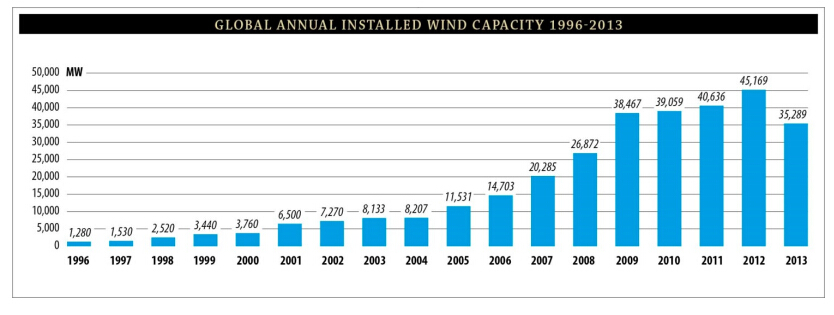
 DownLoad:
DownLoad: 